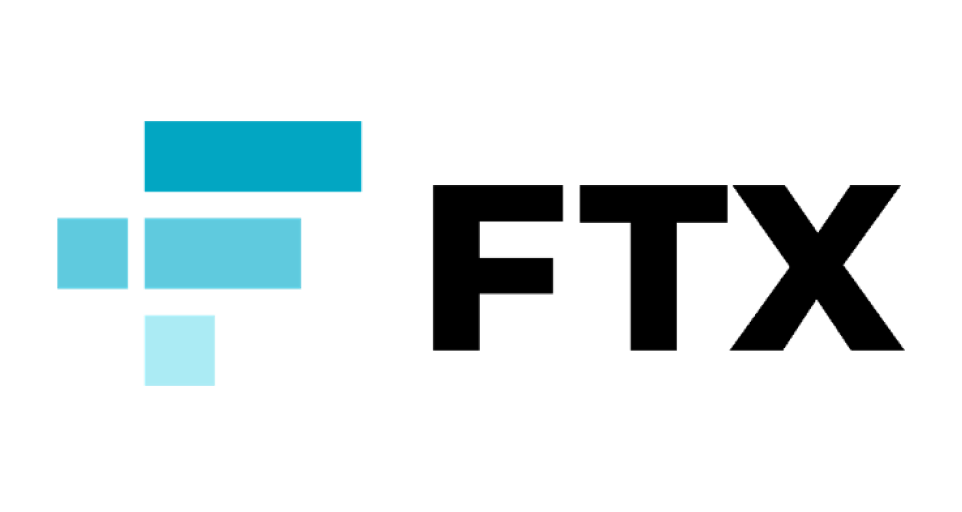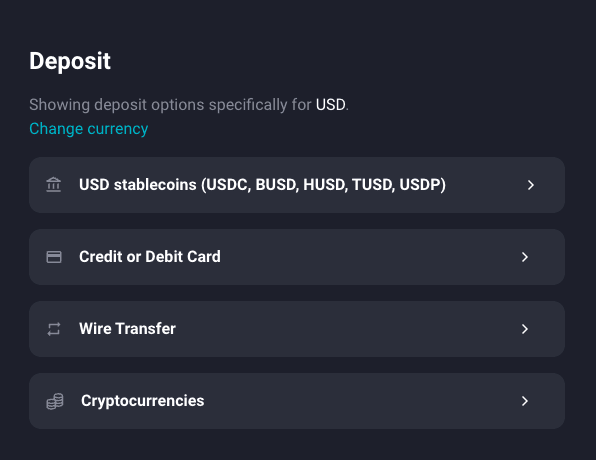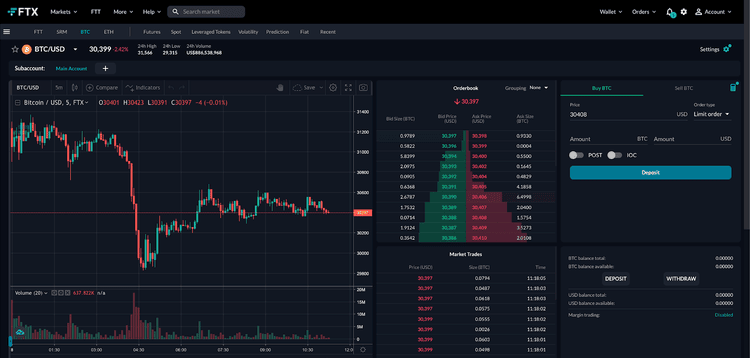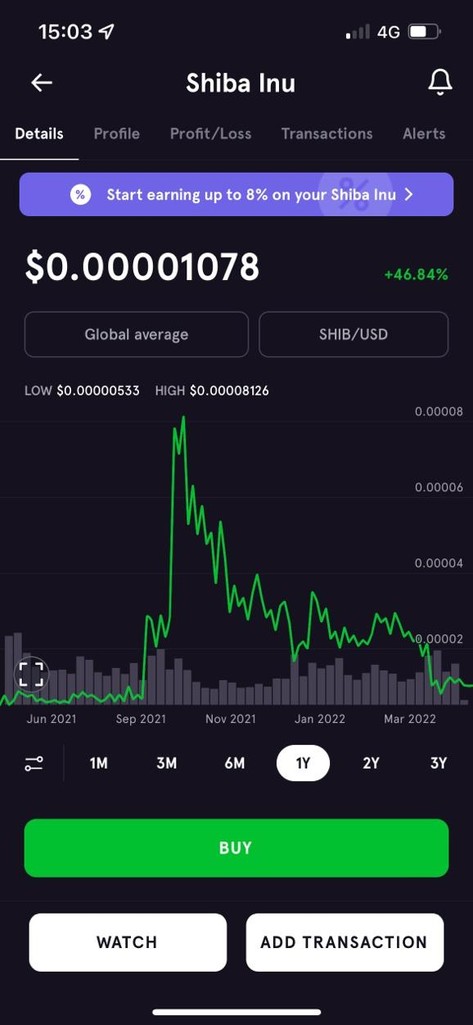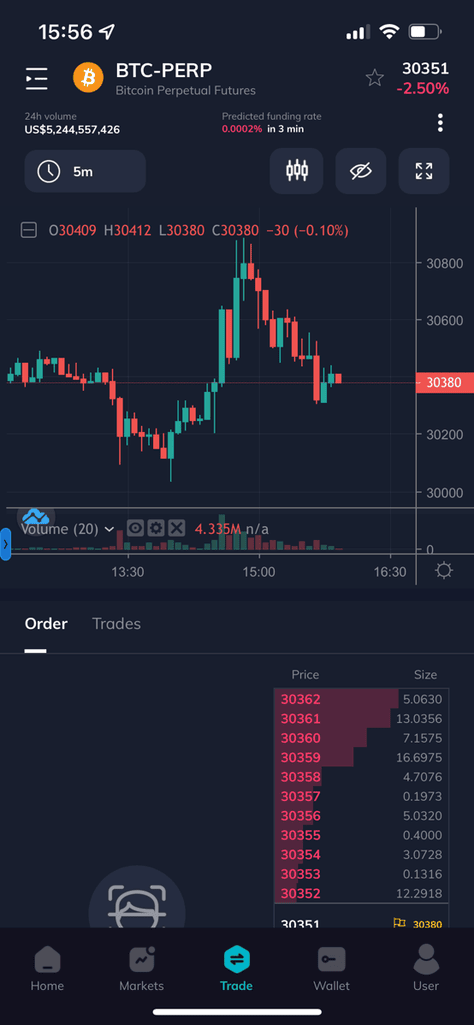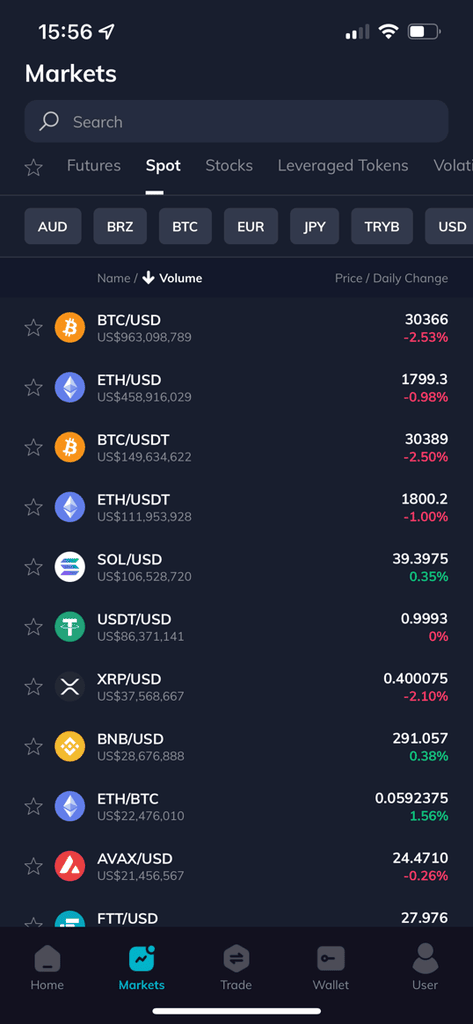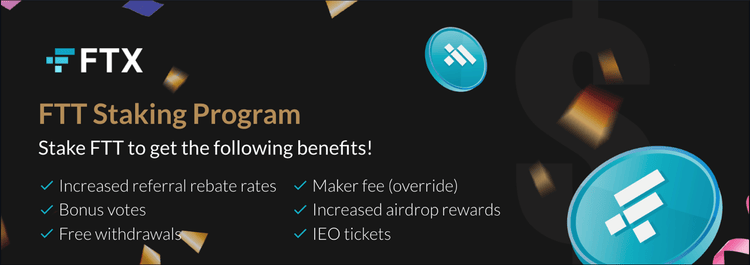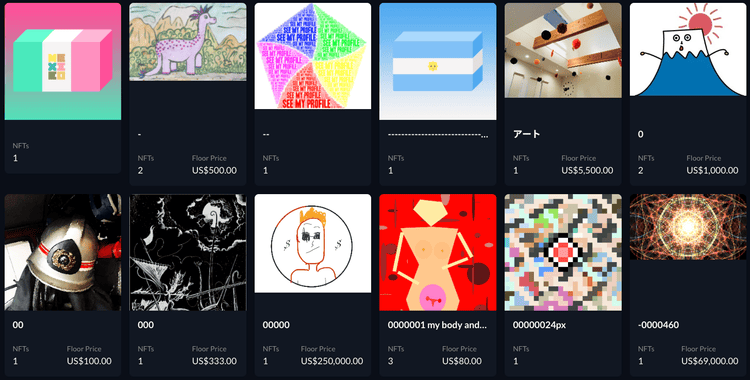FTX Overview
Introduction
Founded in 2019 by MIT graduates Sam Bankman-Fried and Gary Wang and headquartered in The Bahamas, FTX is one of the world’s largest crypto exchanges, with more than 5 million users in more than 100 countries worldwide.
FTX mainly focuses its offerings on derivative and leverage products but also offers options, volatility and spot trading for more than 200 cryptocurrencies and 400 trading pairs. It is available on mobile and desktop interfaces and has primarily been developed for advanced and professional traders. Beginners can use the standard FTX mobile app to buy, sell, and store crypto.
Due to regulatory issues, FTX is prohibited from operating in the U.S. but has overcome this by offering a more scaled-back version of its exchange called FTX.US, but we will only be covering the leading FTX exchange in this review.
Is FTX Safe?
When reviewing crypto exchanges, we mainly look for how solid and reliable their security is. With millions of dollars being traded every day, it’s in an exchange’s best interest to keep these funds safe and secure, not only to secure its own funds but also to keep users’ confidence up when parting with their own money. We looked for a history of any security breaches in the FTX exchange and could find no reports of any hacks or traders’ funds being stolen. FTX has implemented several mandatory and optional security features that we’ve summarised below.
- Mandatory two-factor authentication (2FA) when opening an account and 2FA for all withdrawals.
- Separate passwords for withdrawals, so a double layer of security for all withdrawals.
- When changing the withdrawal password or the 2FA password, withdrawals are locked for 24hrs in case of unauthorised password changes.
- Address whitelisting, meaning that all withdrawals go to a predetermined address.
Getting Started
Assets & Pairs
FTX has support for more than 200 cryptocurrencies and more than 400 trading pairs, as well as access to the stock market with support for 451 tokenised stocks, including some of the big tech names like Apple (AAPL) and Tesla (TSLA). FTX supports 8 of the top 10 coins by market cap (at the time of writing), excluding Cardano (ADA) and Binance USD (BUSD), so if you’re just looking to trade some of the top coins like BTC and ETH, you won’t have a problem doing so with FTX. You can also buy and trade 12 USD stablecoins like Dai (DAI), Pax Dollar (USDP), and Fei USD (FEI).
FTX’s real advantage is not the coin offering itself but rather the derivatives offered on those coins – but more on that below.
Sign-up / Verification Process
FTX has three different tiers of verification, each with different trading and withdrawal limits. You can only provide your email address and name if you want to remain relatively anonymous and access crypto trading. However, it will be limited to the value of $2000 of crypto withdrawals a day. You’ll be able to deposit as much crypto as you want but will not be able to deposit or withdraw any fiat currency. To access all FTX’s features, you’ll need to complete the full Know Your Customer (KYC) verification by providing and verifying a copy of a government-issued ID like a passport or driver’s licence. You will also need to provide a facial selfie to ensure your face and ID document match up.
We signed up on the desktop platform and faced some hurdles with ID verification – we found the process to not be as smooth as other exchanges. We highly recommend using the mobile app to sign up instead and scan a document with your mobile camera, as the verification was much simpler and took less than 10 minutes using this method. Once verified, you can deposit fiat currency, crypto or use a debit/credit card to purchase crypto.
Overall, this wasn’t the best onboarding experience we’ve had, but it was smooth enough once we switched to the mobile app.
Funding Methods
FTX has support for both fiat and crypto deposits. To deposit fiat funds, you must first be level 2 KYC verified, meaning you need to have your identity verified by FTX. Depositing crypto from an external wallet is easy and can be done with minimal verification. FTX make it simple to add any funds. Just navigate to ‘Wallet’ at the top right of the screen and select ‘Portfolio’, and you’ll be directed to a dashboard that lets you deposit, withdraw, convert, and lend crypto, fiat and tokenised stocks.
Fiat Currency
FTX supports deposits of 9 different fiat currencies, including USD, EUR, GBP, AUD, HKD, TRY, ZAR, CAD, CHF, BRZ, MXN, ARS, JPY, and 6 stablecoins. Credit card deposits are also supported for USD. We tested fiat deposits with a debit card, and with a few steps, we had a debit card added. Depending on the card or method you use, you can deposit any of the fiat currencies mentioned, which will automatically be converted to USD. We charged around 3.5% for the purchase, which was available immediately. One thing to note is that any fiat deposited will only be withdrawable after 7 days from when it was deposited.
Cryptocurrency
Depositing crypto from an external wallet was also very straightforward. After searching for the crypto to deposit from the crypto deposit menu, you can choose the relevant blockchain and copy the crypto address. FTX does not charge for crypto deposits, but other external blockchain fees or wallet fees may apply. Deposit times can vary from a few minutes to a few hours; this is out of FTX’s control and dependent on the blockchain used.
Withdrawals
While it’s great that debit cards are accepted as funding, we were disappointed that FTX does not allow you to withdraw funds back to the debit card used. The only way to withdraw fiat is via a wire transfer which involves extra verification. Users wishing to withdraw fiat currency will need to provide proof of address and obtain IBAN and routing numbers if based in the U.K. or the U.S., or IBAN and SWIFT/BIC Code if based in Europe. Users based in Europe can also withdraw using SEPA.
FTX allows one free fiat withdrawal under $5000 per 7-day period, and all withdrawals above $5000 are free regardless. If you want to withdraw less than $5000 twice or more within 7 days, you will be charged the following currency fee for each withdrawal:
- USD – 25 USD
- CHF – 30 CHF
- HKD – 250 HKD
- CAD – 100 CAD
- GBP – 75 GBP
- EUR – 32 EUR
- BRL – 0.3% + $10
We can conclusively say that these fees are incredibly high compared to most other exchanges we’ve used and reviewed. However, if you can plan your withdrawals in advance, you won’t feel these fees as much. Here at MadCrypto, we don’t withdraw funds every week anyway, so we aren’t bothered.
Withdrawing crypto is just as easy as depositing. You’ll need to select the relevant crypto from the Wallet dashboard and enter the crypto wallet address you wish to withdraw to. Withdrawals are usually instant but can take as much as 24hrs depending on the blockchain used.
Fees
FTX uses the standard maker/taker fee structure for trading crypto. The fees are very attractive and up there with some of the cheapest we’ve come across. The highest you’ll pay is 0.020%/0.070% which is well below most of its competitors. To put that into perspective, Binance and KuCoin fees are 0.1%/0.1%, so FTX is a lot cheaper than Binance. The fee structure is tiered (Tier 1 – 6), and the higher your 30-day trading volume, the lower your trading fees will become. More details can be found below.
| Tier | 30-Day Trading Volume (USD) | Maker Fee | Taker Fee |
|---|---|---|---|
| 1 | 0 | 0.020% | 0.070% |
| 2 | >2,000,000 | 0.015% | 0.060% |
| 3 | >5,000,000 | 0.010% | 0.055% |
| 4 | >10,000,000 | 0.005% | 0.050% |
| 5 | >25,000,000 | 0.000% | 0.045% |
| 6 | >50,000,000 | 0.000% | 0.040% |
FTX offers 0% maker fees if you stake 25 ($646 at the time of writing) of its native coin, FTT, to incentivise users to trade with its platform. You’ll be hard-pressed to find cheaper fees on any other exchange, so if fees are important to you, then you will love FTX. We like to take a holistic approach when looking at an exchange to use by looking at the whole package, including things like high fiat withdrawal fees and other factors. But, of course, this is very subjective as every trader will have different strategies, and some things might be important to one trader and not the other.
The Platform
Platform & Ease of Use
FTX has developed its platform for a wide range of traders, from beginners to more experienced traders to spot and futures traders. FTX only has an advanced desktop platform, but beginners can buy crypto using the mobile app. Still, we don’t recommend trying any advanced features until you gain more understanding and experience in trading crypto. Attempting to try using something like margin or futures trading will significantly increase any risk of your investment.
More advanced traders will welcome the standard professional-grade desktop trading platform with a trading chart powered by TradingView and various other advanced features. The trading chart has over 100 indicators but strangely lacks drawing tools. From the navigation bar at the top, traders can seamlessly navigate and switch between futures trading, spot trading, leveraged tokens, volatility, prediction and fiat markets. You can also access a live order book and market trades from the main trading screen.
Mobile App
FTX has two different mobile apps which cater for varying levels of traders. Both are available for Android and iOS devices and can be downloaded from the relevant app stores. Its standard mobile app, FTX, has been developed with the beginner and intermediate trader in mind. It is highly stripped back and basic compared to the desktop platform, and beginners will have no trouble buying and selling crypto or stocks or navigating different markets.
FTX Pro is the more advanced mobile app and has been developed with experienced and professional traders in mind. Users can access all the advanced features of the desktop platform without having to dig their way through multiple tabs and options; FTX has made most features available from the app’s home screen. Using the navigation options at the bottom of the app screen, you can easily switch between the home screen, markets, trading screen, and your wallet. The trading screen has a live order book and an advanced trading chart with the same amount of indicators and features as the desktop version. Honestly, FTX Pro is a great offering for serious traders on the go.
Trading Features
The trading features on FTX have primarily been developed for experienced and professional traders. FTX has 7 order types: limit order, market order, stop limit, stop market, trailing stop, take profit, and take profit limit. FTX also has most of the standard advanced trading tools like futures, spot trading, leveraged tokens, perpetual contracts, volatility, prediction, short selling, and staking. If you see yourself as a serious trader, FTX is the place to be.
Trading bots are becoming more popular in the crypto space. It allows you to execute trades and tweak automated processes to align with your trading strategy. FTX has something very similar and calls it Quant Zone. It is a tool that lets you build and share trading strategies and assign rules which carry out orders on your FTX account. We only recommend using tools like these if you have a lot of experience behind you and can easily find your way around an advanced crypto trading platform.
We thoroughly enjoyed using the FTX advanced UI coupled with its comprehensive list of trading features and can recommend it to any trader looking to maximise their crypto potential.
Volume & Liquidity
When looking for an exchange for crypto trading, the volume can tell you a lot about how well the exchange performs. The higher the volume, the more buyers and sellers are interested in trading crypto assets. Higher volume creates higher liquidity which means the prices become more competitive. CoinMarketCap is an excellent tool that provides you with all the information you need around an exchange’s volume and liquidity and ranks each exchange based on this and other metrics.
FTX is ranked 2nd on CoinMarketCap’s best spot exchange list with a daily trading volume of more than $2.3 Billion and an average liquidity score of 756, which is more than double the average score of around 320 on its list. Comparing it to its next best competitor and ranked the best on the list, Binance, its liquidity score is 850.
At those levels, the score really doesn’t matter much. FTX’s liquidity is above and beyond, and every type of trader will be satisfied.
Additional Features
The FTX Wallet
FTX has an integrated crypto wallet that comes standard with all accounts and offers no separate cold wallet app or service. From the FTX wallet, you can control your crypto and stocks, manage your leveraged tokens and lending, and store and display any NFTs you have purchased. The FTX wallet also lets you convert cryptos to other cryptos without incurring any conversion fees.
If security is your number one priority, which should be when dealing with any sort of currency, then storing your digital assets in cold storage and a non-custodial wallet is probably the best way to achieve maximum security. FTX does not offer this product, but there are many external wallets like this that you can use. The downside is that your funds are not available for immediate use, and extra costs might be involved when transferring assets to and from the FTX wallet.
Our recommendation is to keep the funds you’re trading with on FTX but to transfer your long-term investments to cold storage.
Staking
Staking is an excellent way to help grow crypto sitting idle in your crypto wallet. Some exchanges have multiple ways to stake, with support for various coins and different reward structures and terms. Others have a more condensed staking service, with only a few coins available. FTX falls into the latter, supporting only 4 coins, including its native coin, FTT.
FTX supports staking for FTT, Serum (SRM), Sol (SOL), and Ray (RAY). Rewards and lock-up times vary, and unstaking takes 7 days, but you can pay a fee to unstake immediately. Rewards are as follows:
- FTT – No APY return, but other rewards include discounts on maker fees, IEO tickets, waived fiat rates, waived blockchain fees, and increased airdrop rewards. The more FTT staked, the greater these rewards will be
- SRM – 4% APY paid out daily
- SOL – 6% APY paid out daily
- RAY – 20% APY paid out daily
FTX still has a lot to do in developing its staking service if it wants to be competitive with other exchanges’ staking offerings.
Lending/Borrowing
You can lend and borrow on FTX using the margin trading feature. To start, you will need to enable margin trading in your settings. Margin isn’t available for all jurisdictions; for example, it is prohibited in the U.K., so it’s important to determine this before using it.
You can lend and borrow a total of 106 digital assets, and lending rates vary from as little as 0.88% per year to as much as 39.96% per year. You will incur interest costs on borrowed assets, and rates are calculated hourly. A word of warning – don’t use margin unless you absolutely know what you are doing. You can lose more than your initial investment, and it is a tool meant for professionals.
Customer Support
For such a large and popular crypto exchange, FTX has not focused much of its development on customer support. You can only speak to someone via a ticketing system, where you submit a query and wait for someone to respond via email. We tested it out and tried to contact someone around ID verification, which we imagine is a common problem when going through the KYC process, but we were disappointed. FTX only responded after 4 hours, and we still had trouble resolving our issue, eventually opening another account and using a different form of ID to rectify the problem.
For most other common queries, FTX does have a help centre, but we would be more satisfied if there were a live chat function or phone support. You can also contact them via Telegram, Twitter, and Instagram.
NFTs
NFTs, or non-fungible tokens, are becoming increasingly popular in the crypto space. In short, they are pieces of digital art that can be bought, sold or traded and can be in the form of images, videos, music, and many others. One of the most significant differences between NFTs and cryptocurrency is that there usually is only a small amount of a specific NFT compared to a large amount of a crypto coin. This might sound appealing, but it’s important to note that NFTs don’t necessarily have any inherent value. Their place in the crypto world hasn’t yet been solidified, with many believing it is just a passing trend.
FTX has a very scaled-back NFT marketplace compared to the likes of OpenSea or Crypto.com’s marketplace. It mainly offers NFTs from its own FTX collections and explicitly states that you can own them, display them in your own NFT gallery, bid on them or auction them, but there might not be anyone wanting to buy them from you. The FTX NFT marketplace is not enough to warrant opening an FTX account.
Conclusions
Conclusions for Beginners
For the most part, FTX is not catered toward beginners. The features and tools are way too advanced, and beginners will find the platform and interface confusing and overwhelming if they look for that first step into crypto trading. Beginners can buy and sell crypto using the standard FTX mobile app, but a more basic exchange will suit their needs better. You can always move to an advanced exchange like FTX in the future.
Coinbase is a great place to start as it offers a very clean, intuitive, and basic interface solely catered toward beginners.
Conclusions for Experienced Traders
For experienced traders looking for an exchange that will cover most of their advanced trading needs, FTX is excellent. It is secure, has extremely low trading fees, offers advanced tools like margin and leverage trading perpetual contracts, and has enough crypto and trading pairs on offer to support the crypto in most experienced traders’ wallets. FTX also scored highly amongst liquidity and volume and sits 2nd behind Binance as the best exchange to use for crypto trading, according to CoinMarketCap.
The downside for traders looking to maximise their crypto is the poor staking features. We feel that FTX still needs to develop this further and make it more attractive. However, FTX is very close to an advanced trader’s paradise.

